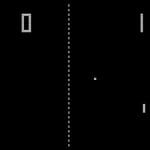 Creepy
Creepy  Creepy
Creepy  Movies and TV
Movies and TV 10 Movies That Get Elite Jobs Right, According to Experts
 Weird Stuff
Weird Stuff 10 Times Real Laws Were Based on Bizarre Hypotheticals
 Animals
Animals 10 Inspiring Tales of Horses Being Human
 Mysteries
Mysteries Top 10 Haunting Facts About the Ghost Ship MV Alta
 History
History 10 Surprising Stories About the Texas Rangers
 Humans
Humans 10 Philosophers Who Were Driven Mad by Their Own Theories
 Miscellaneous
Miscellaneous 10 Video-Game-Worthy Weapons and Armors from History
 Weird Stuff
Weird Stuff 10 Psychics Who Accurately Predicted Wartime Events
 The Arts
The Arts 10 Pieces of Art Inspired by a Broken Heart
 Creepy
Creepy 10 Death Superstitions That Will Give You the Creeps
 Movies and TV
Movies and TV 10 Movies That Get Elite Jobs Right, According to Experts
 Weird Stuff
Weird Stuff 10 Times Real Laws Were Based on Bizarre Hypotheticals
Who's Behind Listverse?

Jamie Frater
Head Editor
Jamie founded Listverse due to an insatiable desire to share fascinating, obscure, and bizarre facts. He has been a guest speaker on numerous national radio and television stations and is a five time published author.
More About Us Animals
Animals 10 Inspiring Tales of Horses Being Human
 Mysteries
Mysteries Top 10 Haunting Facts About the Ghost Ship MV Alta
 History
History 10 Surprising Stories About the Texas Rangers
 Humans
Humans 10 Philosophers Who Were Driven Mad by Their Own Theories
 Miscellaneous
Miscellaneous 10 Video-Game-Worthy Weapons and Armors from History
 Weird Stuff
Weird Stuff 10 Psychics Who Accurately Predicted Wartime Events
 The Arts
The Arts 10 Pieces of Art Inspired by a Broken Heart
Top 10 Best Video Game Consoles That Bombed
There have been hundreds of video game consoles that hit the market and fizzled out, and most of them died for a good reason. Bad games, horrible controls, intense competition, and bad marketing will often kill the sales of an otherwise crappy console.
That said, there have been several consoles that failed even though they were pretty good. Consoles with great games, technical innovations, and more lost their share of the market due to the competition or through poor marketing.
The consoles on this list should have done much better than they ultimately did. You may even have played one or two of these years ago. Which is your favorite ‘failed’ console? Should out in the comments, and don’t forget to mention your favorite games!
Related: Top 10 Most Realistic Video Games
10 Neo Geo AES (1990)
The Neo Geo was one of the most popular arcade cabinets of the early 1990s, thanks to the ability to play more than one game on them. Cabinets featured six games, while others had four, two, or just one. The system had 24-bit graphics and some of the best games of the era, including Fatal Fury, Metal Slug, Samurai Showdown, and The King of Fighters.
A home console system called the AES (Advanced Entertainment System) was released nearly simultaneously with the MVS (Multi Video System) coin-op cabs. It had a memory card you could save your progress on and then take to the arcades to continue playing (or vice-versa), which was a pretty amazing innovation at the time.
The problem with the home console was that it cost as much as the arcade cabinet’s hardware. It used the same cartridges that went into the cabs, and the cost kept most consumers away. The console sold for $649.99 ($1,357 in 2021), with the games going for as much as $299.99 ($626 in 2021).
This was an example of an absolutely amazing console that was simply priced out of reach of most consumers. The Neo Geo AES sold around one million units from 1990 until 1997 when it was discontinued.
9 Nokia N-Gage (2003)
The Nokia N-Gage is a bit of an outlier on this list because it wasn’t created by a traditional video game company. The system was developed by Nokia, and that’s largely due to the simple fact that it’s technically a phone with limited video game capabilities. This was back in 2003 when playing a video game on the phone was severely limited — remember Snake?
The N-Gage came in an odd shape (many thought it looked like a taco), and it offered up the ability to play a multitude of handheld console games on its 2.1″ screen. This was innovative because it meant you could carry around a phone/video game system in a convenient all-in-one device.
The N-Gage featured a total of 58 games throughout its worldwide release. Players could play Call of Duty, Pathway to Glory, Tony Hawk’s Pro Skater, and many more familiar titles on the device. For the time, it was an impressive console, though it had some technical problems — you had to take it apart to change games.
These were addressed with the release of a second-generation system. Still, it never managed to do well in the marketplace. In fact, it sold horribly, and only around three million systems were sold. Ultimately, the device failed for a variety of reasons, and it was ahead of its time. It was meant to take some of the attention from the Game Boy Advance, but it failed miserably.
8 Atari Lynx (1989)
When Atari was still producing home video game consoles, the company jumped into the 4th generation handheld market with an innovative device called the Atari Lynx. The system was the first to feature a color LCD display. It was a hybrid 8/16-bit system, making it superior to the competition when it was released.
The Lynx also featured an ambidextrous layout, so a left-handed player could flip it and use the D-Pad with their dominant hand and vice-versa. It came out only two months after the Nintendo Game Boy and nearly a year before the Game Gear and TurboExpress. Still, it failed to capture much of the market’s attention.
This was primarily due to Nintendo’s absolute dominance of the marketplace, thanks to the Game Boy. Despite this, the Lynx was an innovative console. It featured several popular games, including S.T.U.N Runner, RoadBlasters, Chip’s Challenge, Rampage, and Rampart, among many others.
The Lynx sold around three million units before being discontinued in 1995. It was dominated by the Game Boy, but one of the key reasons it failed was its limited library of around 75 games. Most of those were ports of earlier titles, so few were willing to shell out the $179.99 ($396 in 2021) when the Game Boy came with Tetris and had a more extensive library.
7 Nintendo Wii U (2012)
Nintendo has a history of introducing revolutionary game consoles. The Nintendo Entertainment System essentially saved video games following the collapse of the early 1980s, and the GameBoy revolutionized handheld gaming. The Wii upended things once more in 2006, and its successor, the Wii U… well, it became the worst-selling Nintendo console of all time.
The Wii U was designed as the successor to the Wii. It integrated many of the same functions with one big addition. The inclusion of a Wii U GamePad, which included a touchscreen and all the control buttons found on the other controllers, was meant to, once more, revolutionize gaming.
In a way, it did this, but only by inspiring its successor, the Nintendo Switch. The Wii U failed to recapture the excitement of the video game community the Wii enjoyed, and its sales suffered considerably. A weak lineup of launch titles, lack of market interest, limited third-party support, scant internal memory, and technical limitations compared to its competition hurt sales.
The Wii U sold a little over 13.5 million units before being discontinued in 2017. The failure of the Wii U guided the development of the Switch, which became one of the company’s best-selling consoles, so its legacy of failure can be seen as a sort of inspirational success story.
6 SEGA Game Gear (1990)
The success of the Nintendo Game Boy cannot be overstated, as it is one of the best-selling handheld consoles ever made. The Game Boy proved the viability of handheld systems with cartridge support. Hence, every other video game company tried to get a piece of that market.
Sega entered the handheld gaming wars with the Sega Game Gear, a system with an 8-bit fully-backlit color screen. The Game Gear was technologically superior to the Game Boy, which featured a monochromatic dot-matrix screen without a backlight.
The Game Gear had everything over its Nintendo competition. Still, at the end of the 4th generation, the Game Gear’s sales came to around 10.62 million units. Nintendo’s Game Boy numbers hit 118 million (including the Game Boy Color), so why did the Game Gear fail? Four words: game library & battery life.
The GameBoy’s package deal with Tetris made it superior right out of the box. Sega’s library included 360+ games by the end of its production run, which isn’t terrible. Many of the games were well-received, including Sonic the Hedgehog, Mortal Kombat II, & Mighty Morphin’ Power Rangers.
When it launched, the Game Gear had six games, which wasn’t great. The Game Boy’s library includes some 1,040+ games, and while not every one of them is exceptional, there are hundreds of great titles on the system. The power drain the Game Gear’s display had on the system and the limited battery life made the Game Boy a much better option.
5 NEC TurboGrafx 16 (1987)
The fourth generation of home consoles saw the release of numerous 16-bit systems, including the Super NES, Sega Mega Drive/Genesis, and the NEC Turbo Grafx 16 (PC Engine outside North America). The latter is one that few in the States knew existed, thanks to the market dominance of Nintendo and Sega.
The system’s games were coded onto small HuCards, which were a little thicker than a credit card. The Turbo Grafx 16 featured the release of several impressive games, including Cadash, Bonk’s Adventure, Legendary Axe, Devil’s Crush, and many more.
The TG16 failed to gain a hold in the North American market, primarily due to a terrible marketing strategy. If you’re only hearing about it while reading this, it’s mainly because the system wasn’t marketed much at all.
It saw some upgrades via a CD-ROM attachment during its life, and an expensive handheld system, the TurboExpress, was capable of playing HuCards. Still, it was too expensive for most consumers. Ultimately, the TG16 saw the release of 16 models from 1987-2994, but it only sold around 10 million units, eight million of which were sold in Japan.
4 Neo Geo Pocket Color (1999)
SNK developed and released the Neo Geo Pocket Color in 1998 in Japan. The system was superior to many of the consoles introduced in the 6th generation. The Neo Geo Pocket Color’s 16-bit graphics, highly accurate controls, and 40-hour battery life made it innovative and accessible, and its price tag of $69.95 ($115 in 2021) was difficult to beat.
The system launched with 14 relatively solid titles, and it initially did well in the U.S. and Japan. Unfortunately, it saw limited retail support in the States, and there were issues with third-party software development. Additionally, the forthcoming Game Boy Advance kept people from purchasing the system.
Despite these issues, the system saw the release of some excellent titles, including SNK vs. Capcom: The Match of the Millennium, Puzzle Bobble Mini, and King of Fighters R-2. Its controls were praised for their accuracy, and fighting games were especially beloved on the console.
Financial issues with the company ultimately led to the console’s demise. Production ended after less than a year, though sales continued in Japan into 2001 with the remaining stock. Only two million units sold at the end of its run, bringing an end to SNK’s video game console production.
3 Sega Master System (1986)
Back in the early 1980s, the video game industry suffered a crash, and there were plenty of people who thought it wouldn’t recover. Video games were called a “passing fad” and little more, but that all changed with the introduction of the Nintendo Entertainment System. The NES revolutionized and saved the industry, but it wasn’t the only console available at the time.
The main competition for the NES’ market share was the Sega Master System. The 8-bit console was developed and released in 1985 in Japan. It hit the American market the following year and was followed by a release in Europe and Brazil. The Master System was technologically superior to the NES in numerous ways.
It had a pair of 3D glasses, a light gun, and other attachments that made it competitive. Unfortunately, it wasn’t competitive enough, and the NES absolutely dominated the market throughout its run. The NES sold just under 62 million units compared to the Master System’s ~13 million.
Ultimately, the Master System failed in the U.S., but it did better in other markets. This didn’t save the system from losing the console war against Nintendo, but it did keep it in production for longer than expected. It had some great games, but the library was much smaller than the competition. Sega largely abandoned it in favor of the Genesis, which was released only two years later.
2 PlayStation Vita (2012)
Sony’s introduction to the video game console marketplace with the PlayStation was a massive success, and the company’s products continue to dominate. Sony attempted to recreate that success on the handheld market in 2005 with the PlayStation Portable, which was incredibly successful with more than 80 million units sold.
The second attempt at dominating the handheld marketplace came in 2012 with the PlayStation Vita, which came with numerous upgrades and updates to its successor. The PS Vita featured a 5″ OLED multi-touch capacitive touchscreen, Bluetooth, Wi-Fi, and 3G cellular communication. It could play incredibly advanced titles and had PS4 Remote Play capabilities.
On paper, the PS Vita is a perfect handheld console, but in reality, it suffered from the evolution in mobile gaming via advancements in smartphone technology. The Vita entered the market too late, and people were less inclined to carry around the console in addition to their readily available phones.
It didn’t help that the Nintendo 3DS was already dominating the handheld market or that Sony didn’t market it well. Ultimately, the PS Vita was a failure, with only around 16 million units sold. That’s not bad, but it pales in comparison to the 3DS’ 75+ million.
1 SEGA Dreamcast (1998)
The Dreamcast was the first video game console released in the sixth generation, predating the PlayStation 2, GameCube, and Xbox. The console featured off-the-shelf parts, which helped reduce its production cost while maintaining a high degree of quality. It was called “ahead of its time” when it was released.
Despite these factors, the Dreamcast was a failure for Sega, which was once Nintendo’s main competitor. The Dreamcast ended up being the last hardware console Sega developed, leaving the company to refocus its efforts on software development and the licensing of its franchises to other consoles.
That’s how Sonic ended up on every system that wasn’t developed by Sega, and it’s largely due to the failure of the Dreamcast. The system is still beloved by many, and it’s well known for games like Phantasy Star Online, Crazy Taxi, and SoulCalibur.
It offered several innovations, including a built-in modem allowing for internet support and online play. The Dreamcast was the first console to do this, but it only sold 9.13 million units, ultimately paling in comparison to the PS2’s sales, which climbed to more than 158 million total units sold.








